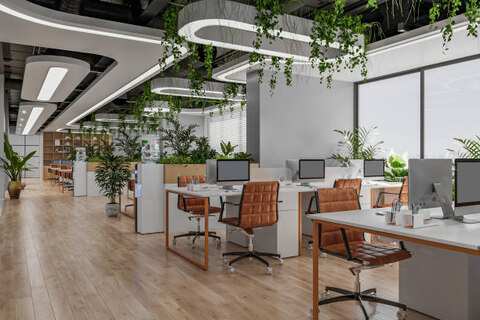Inclusive Office Design: How to Create an Accessible Work Environment for All

Inclusive office design is an approach that ensures accessibility and comfort for all employees, regardless of their physical abilities, age, or other characteristics. Creating an inclusive work environment not only increases employee satisfaction but also helps companies attract and retain talented professionals. In this article, we will explore the fundamental principles of inclusive office design and provide tips for creating an accessible work environment.
1. Fundamental Principles of Inclusive Design
Accessibility
Accessibility is a key aspect of inclusive design. It involves creating spaces that are easily accessible to people with disabilities. Here are some essential elements to consider:
- Barrier-Free Access: Ensure the presence of ramps, elevators, and wider doors for wheelchair users.
- Accessible Restrooms: Restrooms should be equipped according to accessibility standards, including grab bars for support and adequate space for maneuvering.
Universality
Universal design means that the environment should be comfortable for everyone, regardless of their needs. This can include:
- Adjustable Workstations: Office desks and chairs that can be adjusted to accommodate various physical needs.
- Adaptive Lighting: The ability to adjust lighting at workstations for comfortable reading and working.
2. Visual and Communication Aspects
Clarity and Contrast
It is important to ensure visual elements are clear to facilitate navigation within the office:
- High Contrast: Use high-contrast colors for signs and navigation elements to assist individuals with visual impairments.
- Clear Signage: Place clear, easy-to-read signs for office navigation.
Acoustic Comfort
Acoustic conditions also play a significant role in creating an inclusive environment:
- Soundproofing: Use soundproofing materials to reduce noise levels and improve concentration.
- Text Alternatives: Provide text versions of important messages and instructions for individuals with hearing impairments.
3. Space Planning Approaches
Flexibility
Office layout should be flexible and adaptable:
- Modular Furniture: Use modular furniture that can be easily adjusted based on user needs.
- Personalized Workspaces: Allow employees to customize their workstations according to their needs.
Zones for Various Needs
Create specialized zones for different needs:
- Break Areas: Provide relaxation and break areas where employees can relieve stress and recharge.
- Private Rooms: Offer private rooms for confidential conversations for employees who need privacy.
4. Technological Integration
Technological Accessibility
Utilizing modern technology can help make the office more inclusive:
- Adaptive Technologies: Invest in adaptive technologies, such as text-to-speech software or screen enlargers for individuals with visual impairments.
- Ease of Use: Ensure all office technologies are user-friendly and accessible to all employees.
Conclusion
Inclusive office design ensures accessibility and comfort for all employees, which enhances their productivity and satisfaction. Implementing principles of accessibility, universality, clarity, acoustic comfort, and technological accessibility helps create a work environment that meets the needs of every employee. Investing in inclusive design not only promotes equality but also improves team dynamics, positively impacting the overall success of the company.

